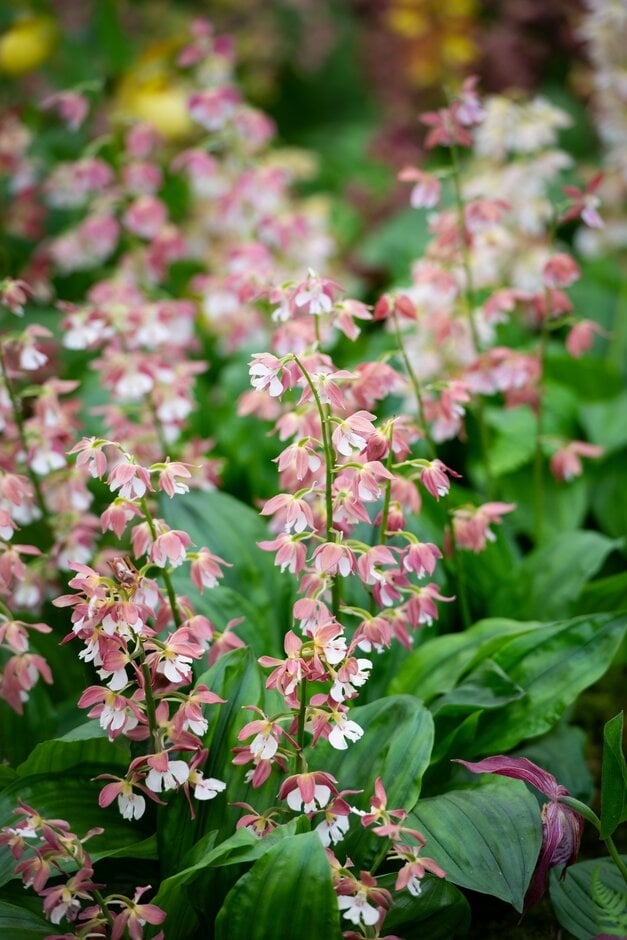Calanthe discolor
two-coloured calanthe
A terrestrial orchid with oblong, evergreen or semi-evergreen leaves up to 30cm long. In spring it produces sprays of up to 10 brown and white flowers, variably-flushed with green or pale pink
Size
Ultimate height
0.1–0.5 metresTime to ultimate height
2–5 yearsUltimate spread
0.1–0.5 metresGrowing conditions
Moisture
Well–drainedpH
NeutralColour & scent
| Stem | Flower | Foliage | Fruit | |
| Spring | Brown Green Pink White | Green | ||
|---|---|---|---|---|
| Summer | Green | |||
| Autumn | Green | |||
| Winter | Green |
Position
- Partial shade
Aspect
West–facing or East–facing
Exposure
Sheltered Hardiness
H4Botanical details
- Family
- Orchidaceae
- Native to GB / Ireland
- No
- Foliage
- Semi evergreen
- Habit
- Bushy
- Genus
Calanthe are evergreen, semi-evergreen or deciduous orchids that may be terrestrial or epiphytic. They have corm-like pseudobulbs and basal clusters of pleated leaves. Loose racemes of showy flowers with 3-lobed lips may appear, on erect stems, in spring, summer or winter
- Name status
Correct
- Plant range
- Japan, Korea, China
How to grow
Cultivation
Under glass grow in terrestrial orchid compost in bright, filtered light with high humidity. Outdoors grow in coarse, well-drained, humus-rich soil in a sheltered site in partial shade
Propagation
Propagate by division or cuttings
Suggested planting locations and garden types
- Patio and container plants
- City and courtyard gardens
- Flower borders and beds
Pruning
No pruning required
Pests
May be susceptible to mealybugs, orchid scale insect, glasshouse red spider mite and aphids under glass; outdoors protect from slugs and snails
Diseases
Generally disease-free
Love gardening
Sign up to receive regular gardening tips, inspiration, offers and more
View our Privacy Policy
Get involved
The Royal Horticultural Society is the UK’s leading gardening charity. We aim to enrich everyone’s life through plants, and make the UK a greener and more beautiful place.
